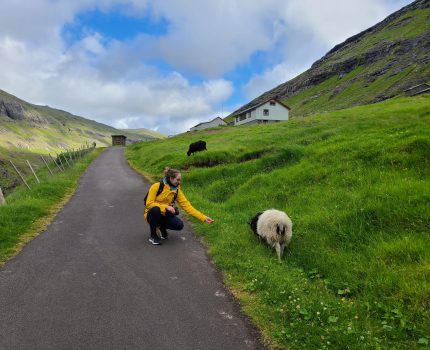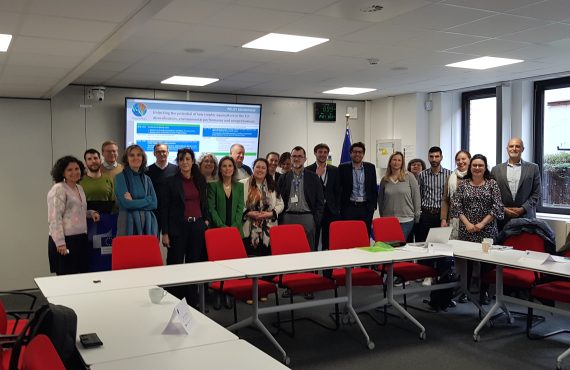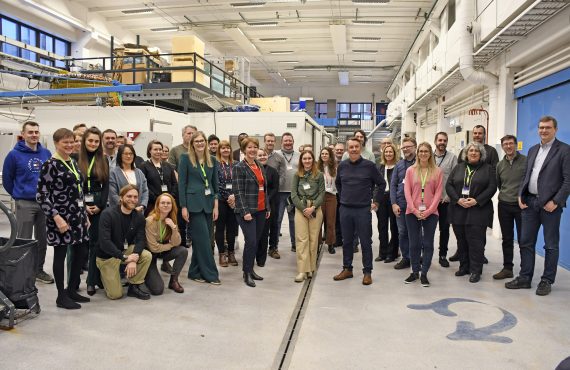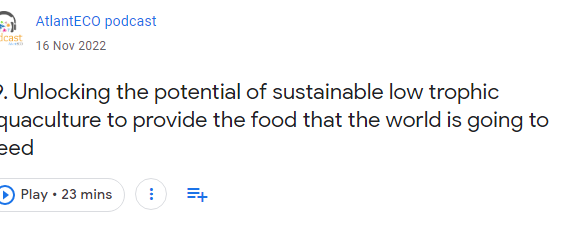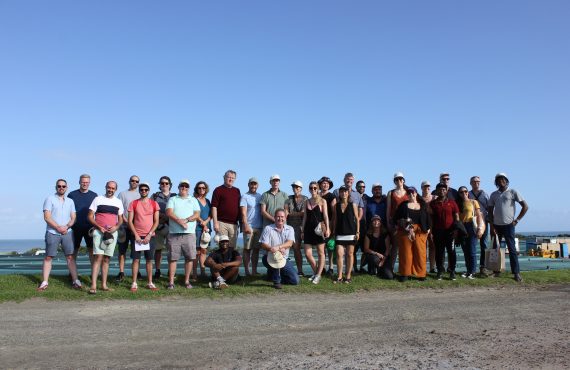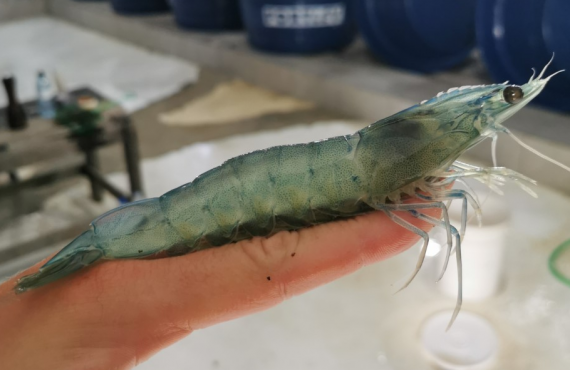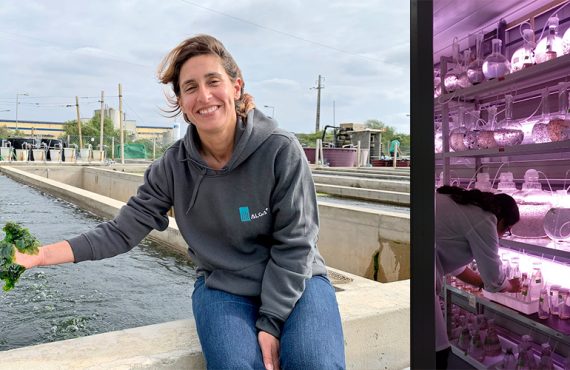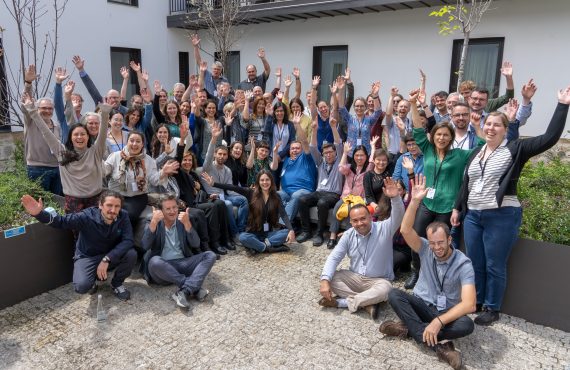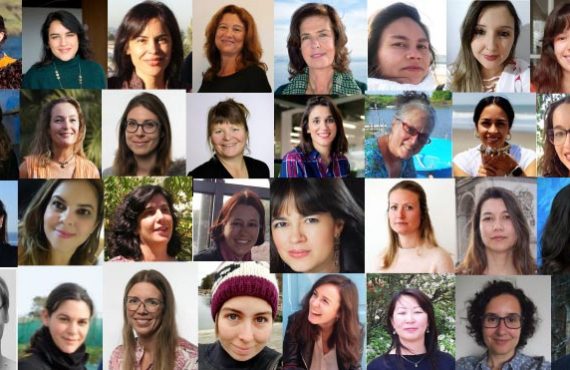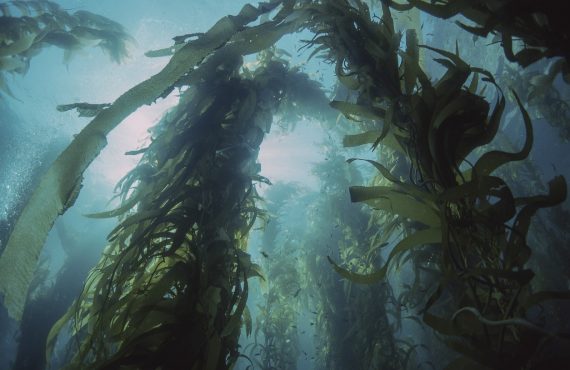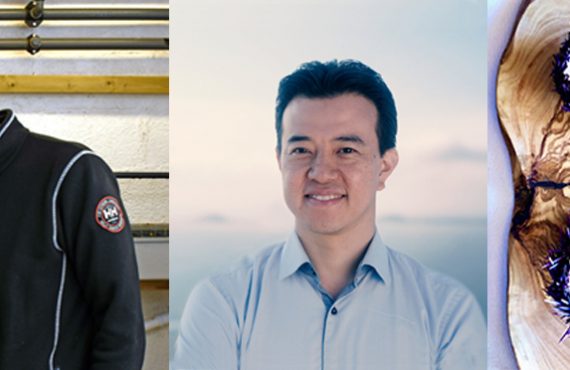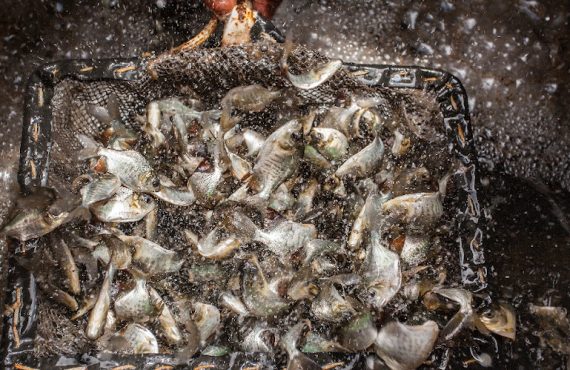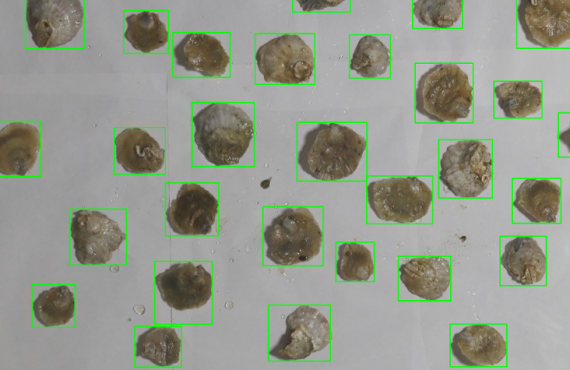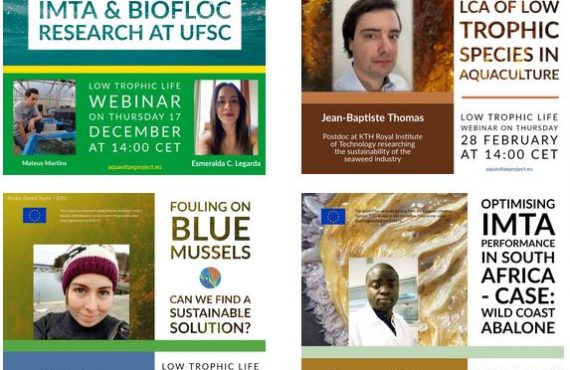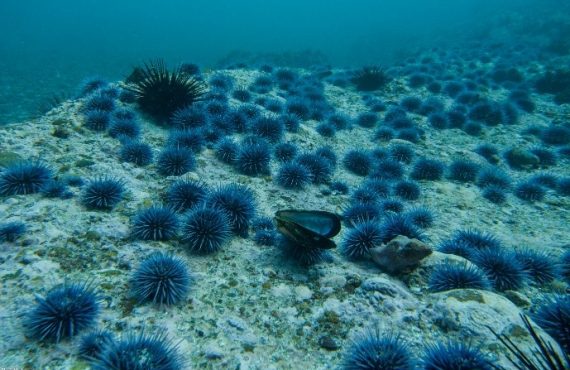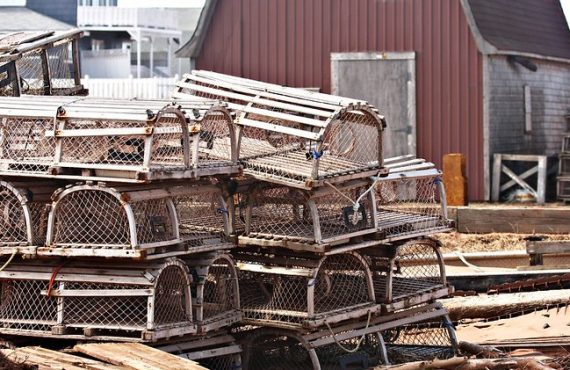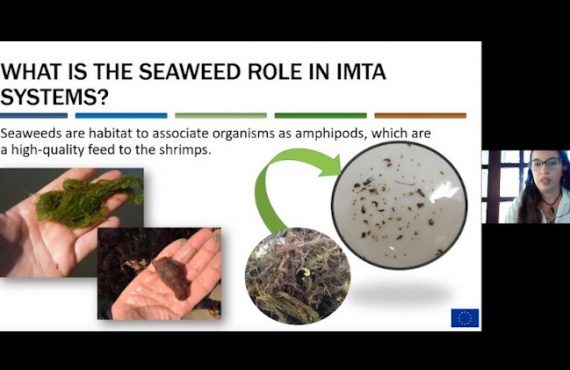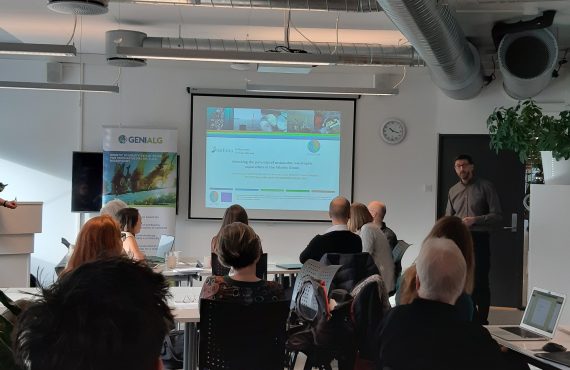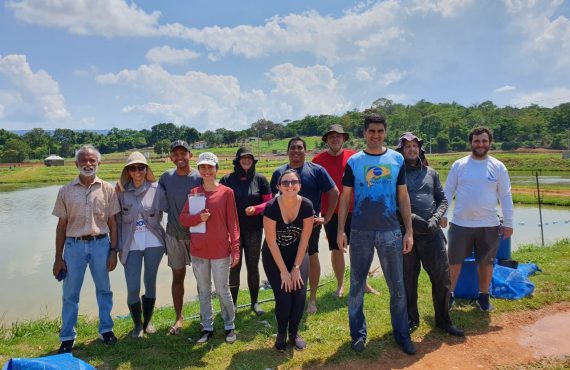Mayleen Schlund, apprentice at the research station Fiskaaling, Faroe Islands – Photos: Mayleen Schlund
Last summer Mayleen Schlund took part in AquaVitae training activities. The student exchange within the project framework allows the participants to expand their international networks and develop valuable transversal skills.
Mayleen studies Physical Geography at the Leibniz University of Hanover, Germany. She is in her final semester carrying out her bachelor thesis. Interested in the research station Fiskaaling in the Faroe Islands, Mayleen got in touch with AquaVitae in order to work on her thesis, which focuses on the comparison of the growth of sugar kelp at a cultivated natural area and an aquaculture site at Sørvágsfjord, Faroe Islands.
Sugar kelp at a glance
Sugar kelp or Saccharina latissima is an alga that belongs to the Laminariaceae family. It presents a brown colour and it is long like a belt and this is the reason why it is also known as sea belt. It can create forests where different species of fish or shellfish can live and feed themselves. Along the Atlantic Ocean this type of seaweed is found in the Barents Sea, in Galicia (northwest of Spain) and, of course, in the Norwegian Sea and the North Atlantic, where Faroe Islands are.

Sugar kelp got during Mayleen´s field work
Precisely in the archipelago Mayleen stayed for a month. Her visit allowed her to dive into the area of sugar kelp and improve on her fieldwork and laboratory skills along with Gunnvør á Norði, Ph.D., and Agnes Mols Mortensen, Ph.D., her advisors.
What can an exchange bring?
Maylen also had the opportunity to go on several boat excursions to Kaldbaksfjord and Sørvágsfjord for collecting water and algae samples. Thanks to this experience she could learn about the locations and the sample techniques of the provided data by Fiskaaling.
In addition, the student explored the remotest corners of the Faroe Islands. She was impressed by all facets of landscapes, the people and their traditions (regatta, the sea food and sheep called her attention especially). However, the biggest impact that the visit made on her was the input she gained for her bachelor thesis where she is currently working on.
Left to right: view on the Sørvágsfjord, Faroe Islands, and Mayleen in one of her excursions
Once the stay finished, Mayleen wrote a letter to Philip James, AquaVitae´s coordinator, where she acknowledges Fiskaaling, SureAqua, AquaVitae and all the people involved in the project: “Thank you for these fantastic experiences and the new opportunities you offered me”, says Mayleen at the end of her letter. The exchange was so rewarded that the student is looking forward to visiting Nordic landscapes again and she will try to do so for her master’s thesis.
Here we find another evidence of how important student exchanges are. This type of activities not only provides training, but also opens gates to knowledge and expertise. Besides these interchanges, AquaVitae supports other activities such as the Training of Trainers (ToT), monthly webinars and a MOOC on low-trophic aquaculture.
A deeper insight:
– Learn more on on AquaVitae´s training actions.





